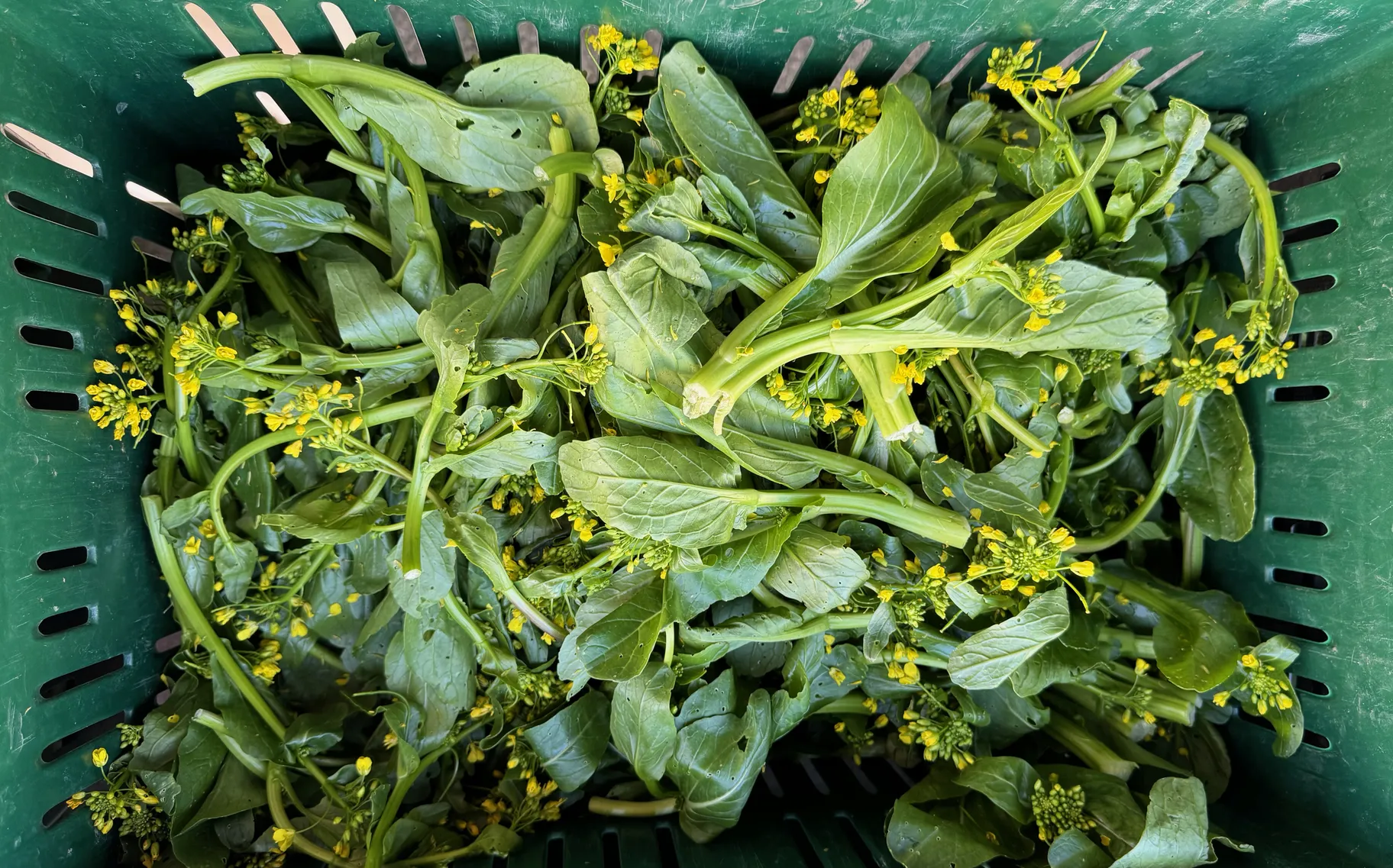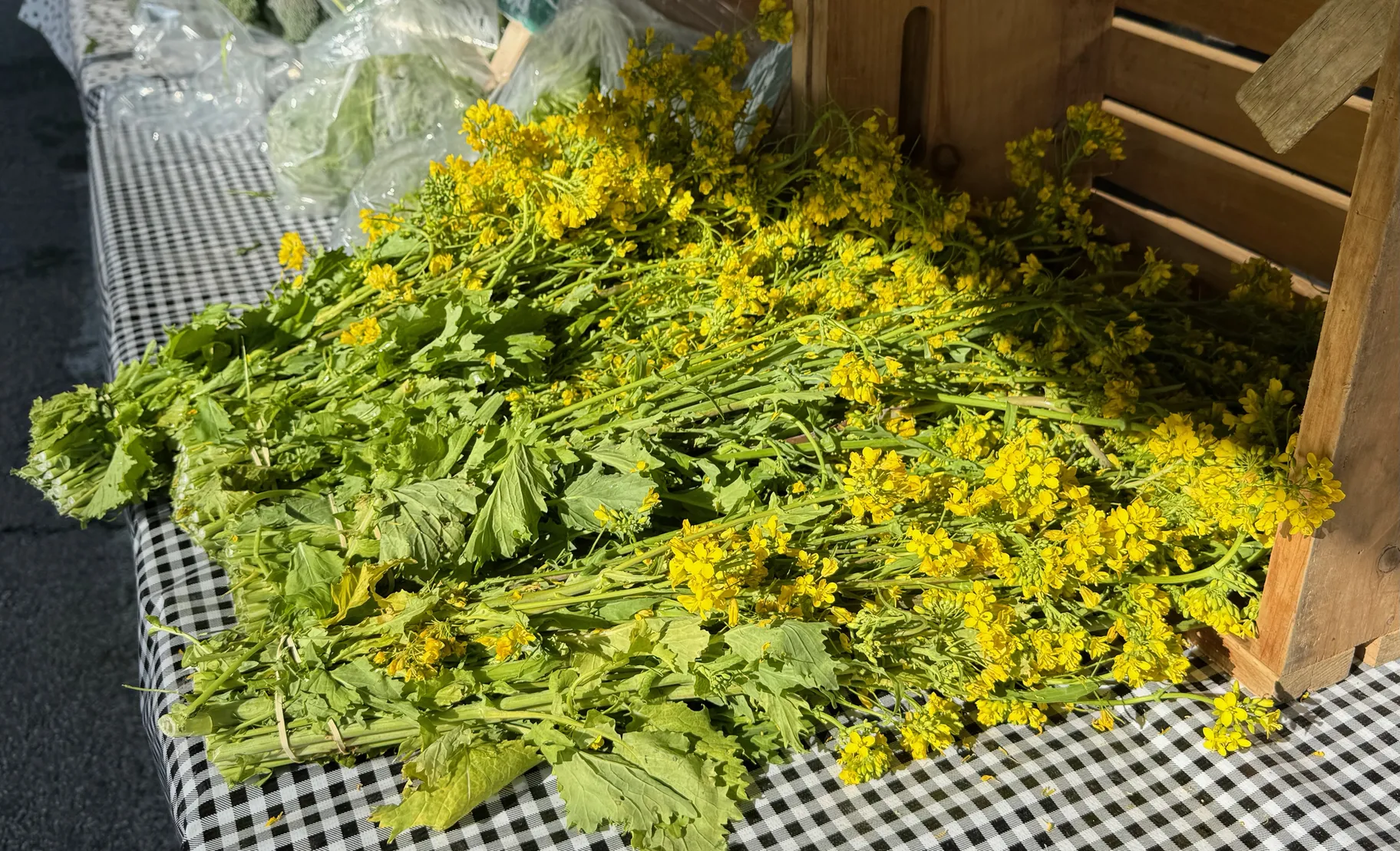One night as I was about to make dinner, I peered into my veg bin in the refrigerator and saw with dismay that my broccoli was turning yellow, which happens when it starts to flower. But then I lifted the heavy head out and sniffed it. It still smelled like broccoli. So I decided to cook it anyway. It was delicious and looked so pretty, the yellow bits set against the green.
That made me think about how we decide what’s edible or not. We don’t want to poison ourselves, but at least in the U.S., I believe we tend to be overly cautious when it comes to deciding when vegetables are no longer of use. And when it comes to eating flowers, we think primarily of varieties that are grown explicitly to be “edible,” like johnny jump-ups or nasturtiums. However, flowers are part of the plant's life cycle, and they mediate the flavors of whatever plant they are in such interesting ways.

This flowering bok choy is from Coleman Family Farms near Santa Barbara. Photo by Gillian Ferguson/KCRW
Neither fruit nor veg are scientific categories. The names differentiate the plants in somewhat arbitrary ways, from an eating standpoint. They are botanically differentiated by categorizing fruit as something that comes from the flower of a plant, while all the other plant parts are categorized as vegetables. So generally, fruits have seeds (yes, tomatoes are botanically a fruit), while vegetables are made up of leaves, stems, and roots.
Vincent M. Russo in the International Journal of Vegetable Science says, “Botanically a vegetable is anything that is not the reproductive portion of the plant derived from a flower. … Edible flowers could be considered a vegetable since the ovary has not expanded to contain seed.”
Vegetables from the garden or farm eventually get a signal to reproduce, which in their world means flower. When you’re a gardener, often seeing a vegetable “bolt,” which is when a flowering stalk arises out of the plant, is dismaying because it means the vegetable is at the end of its life cycle. But there is still an opportunity for eaters. The flowers taste like the vegetable they’re from, but often with an overlay of sweetness (think bee nectar) or a slight bitterness, which can be appealing. Maybe a bit of both. With plants that have a relatively short life cycle like cilantro, learning to love and eat those flowers lets you extend your culinary enjoyment of them. And those flowers are so pretty!
See what Santa Barbara-based Colman Family Farms is offering this week at market stands — there is flowering cilantro, wood sorrel, arugula, mustard, white, and blue borage.
During the market report this week, Rose Wilde shared a recipe for Broccoli Raab Borage Cream Cheese Spread from her book Bread and Roses. I use radish flowers to make compound butter for spreading on sandwiches or adding to pasta. Flowering bok choy can just be added to the saute pan or wok to be cooked as usual. And arugula flowers are exceptional in all kinds of salads, including fruit salad. Use flowering vegetables freely as a source of beautiful nutrition.

This flowering mustard is from the Santa Monica Farmers’ Market. Photo by Gillian Ferguson/KCRW
